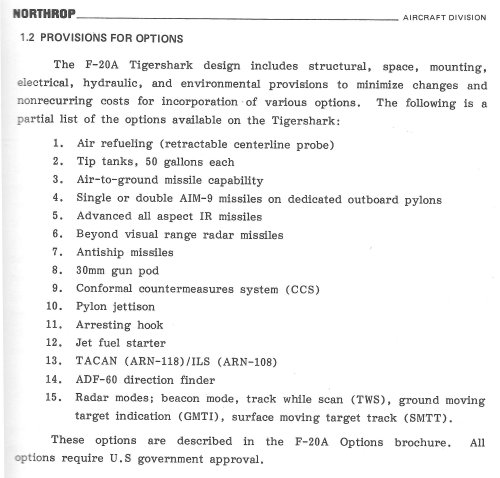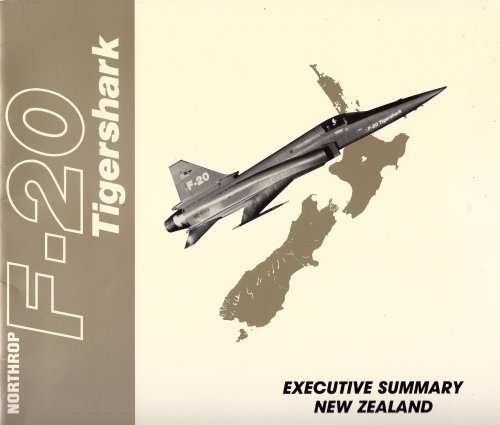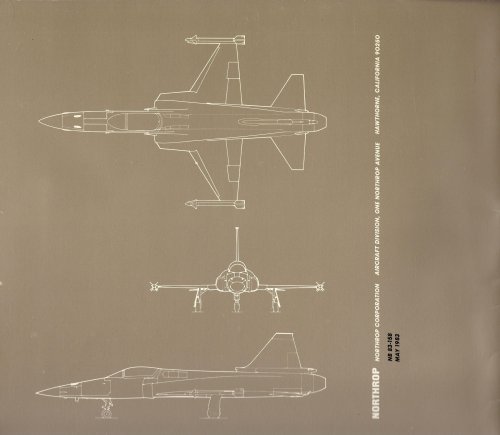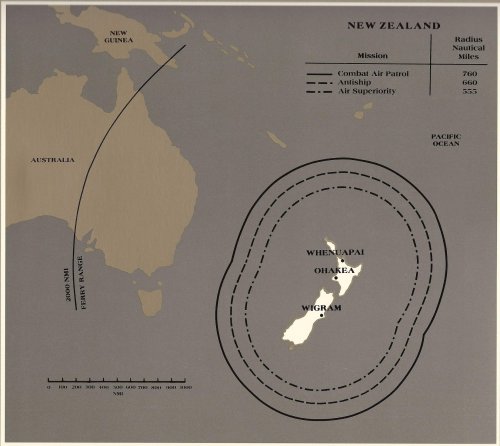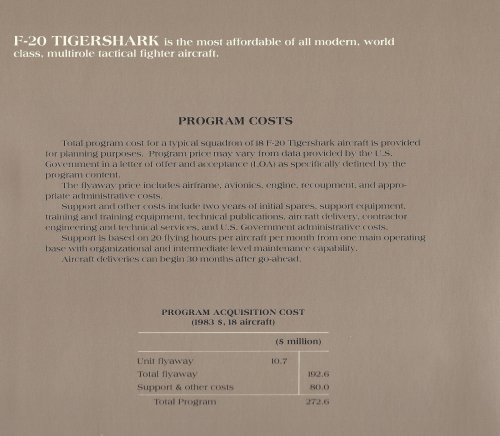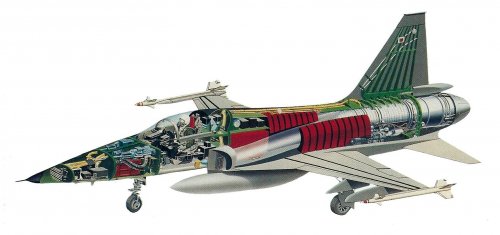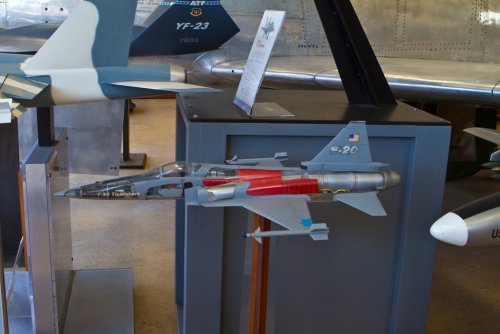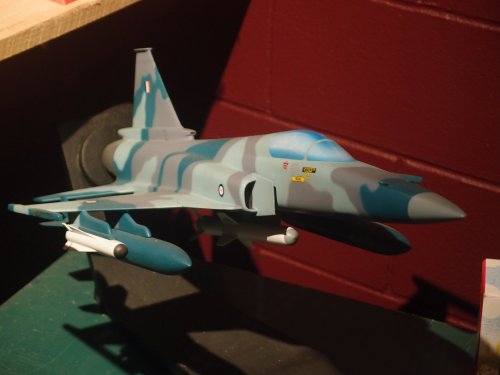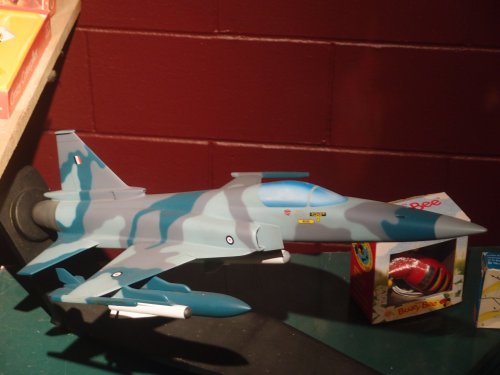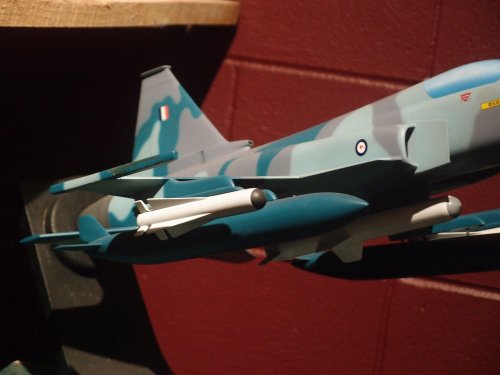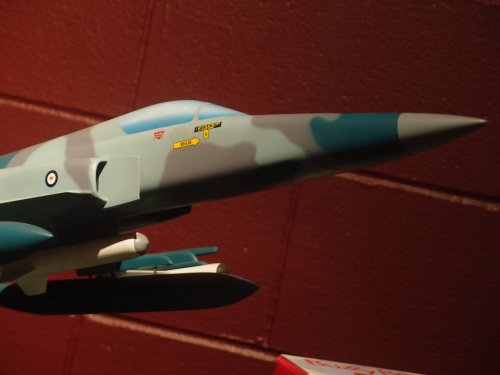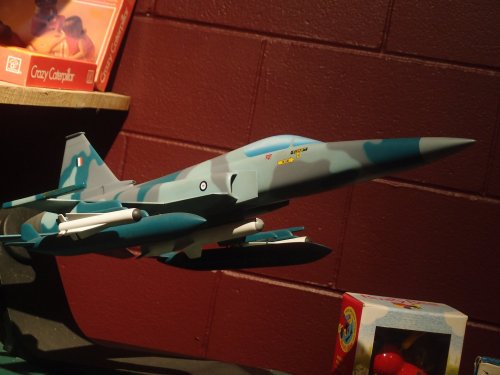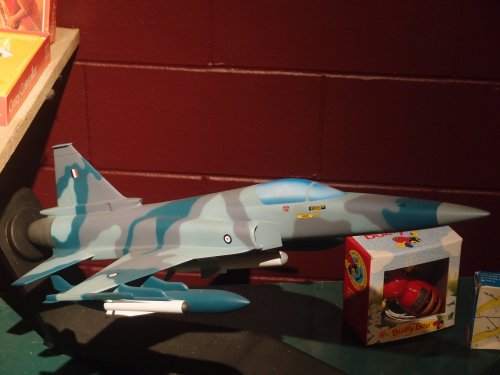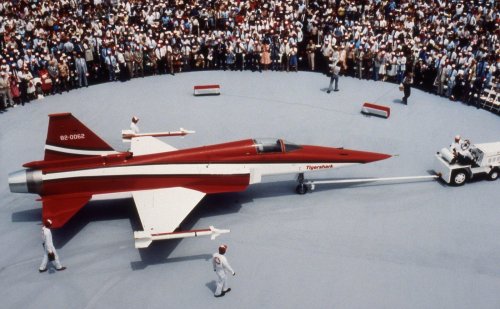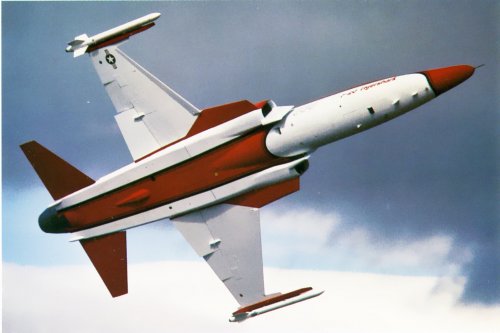Wikipedia mentions that the Carter Administration's export policy was also motivated by concern that front-line fighter technology might get in the hands of the Soviet Union or used against the United States. Unfortunately, I cannot find this information verified from the graduate school theses or articles that are linked to the footnotes. Is this true?
The Carter Administration believed that they could some how keep the peace without selling fighters and other advanced weapon systems to nations outside the NATO countries, Japan, and Australia. He reasoned that the United States could not be "both the world's champion of peace and the world's leading supplier of the weapons of war." [http://en.wikipedia.org/wiki/F-20_Tigershark#cite_note-saga-9] Unfortunately, the Administration only succeeded in forcing friendly countries to look to Europe for arms including sales of the Dassault Mirage 2000.
I understand that the FX program was originally intended to create an austere fighter aircraft for the Third World between the F-5E and the F-16 in capability. I presume that the idea was to create and sell a fighter that was capable of providing air defense, a national right, but limited in its capabilities to wage war on neighboring countries. The market for the Northrop F-5G was totally dependent on the continuation of the Carter Administration's export control policies. The ability to purchase the Northrop F-5G as a reward for good behavior. Unfortunately, even the Carter Administration did not follow its export control policies when it allowed the sale of the F-16 to Israel as a reward for the Camp David Accords and the Egypt-Israel Peace Treaty.
If Jimmy Carter had won re-election in 1980, the story of the F-20 Tigershark may have been different and the F-16 may not have been available to countries who wanted it. Unfortunately for Northrop, the Reagan Administration relaxed the Carter Administration's export control policies.
Because the F-5G/F-20 was born from the FX program, Northrop could not market the aircraft directly to foreign air forces. Only the State Department could market the F-5G/F-20 and Northrop was forced to submit all marketing materials to the State Department for approval, which could take months. Northrop complained that the State Department did not do enough to sell the F-5G/F-20. Unfortunately, the Reagan Administration never allowed Northrop to market the aircraft directly to foreign air forces.
Another complaint leveled against the F-20 Tigershark was that it was not good enough for the United States Air Force. Why should foreign air forces buy an aircraft that was not good enough for the United States Air Force or be added to the United States inventory? The aircraft was not chosen in 1985 as a dissimilar "aggressor aircraft" for combat training by the United States Air Force or the United States Navy. Rumor has it that the F-16 was sold at a loss to the United States Navy to keep Northrop out of the market. The aircraft also lost the 270 aircraft Air Defense Fighter (ADF) competition for the Air National Guard to the General Dynamics F-16C in 1986. The United States Air Force decided later to cancel the order and retrofit existing F-16As to the F-16C for the air defense role.
Despite Northrop's re-marketing of the F-5G Tiger II as the F-20 Tigershark and its numerous improvements, it was always seen by potential customers as a deliberately inferior aircraft to the F-16.
F-14D said:"F-20" designation could be thought of as a marketing ploy, but it could also be said that "F-5G" was even more a marketing ploy.
When Carter set up the "export fighter" program, one of the requirements was that the planes had to be a derivative of an existing aircraft, preferably not as good. F-16/79 certainly was this. Northrop adopted the designation "F-5G" to go along with this, although the Tigershark was more a new, much more capable aircraft. It was based on and shared components with, but was not a derivative of, the F-5 series. A parallel would be the F9F Panthers and Cougars, although the difference was more dramatic.
Once President Reagan came into office, the "export fighter" concept died a deserved death. Northrop realized that the export fighter program was effectively telling nations , "You aren't good enough to deserve first line stuff", which made it kind of hard to market aircraft.
The Carter Administration believed that they could some how keep the peace without selling fighters and other advanced weapon systems to nations outside the NATO countries, Japan, and Australia. He reasoned that the United States could not be "both the world's champion of peace and the world's leading supplier of the weapons of war." [http://en.wikipedia.org/wiki/F-20_Tigershark#cite_note-saga-9] Unfortunately, the Administration only succeeded in forcing friendly countries to look to Europe for arms including sales of the Dassault Mirage 2000.
I understand that the FX program was originally intended to create an austere fighter aircraft for the Third World between the F-5E and the F-16 in capability. I presume that the idea was to create and sell a fighter that was capable of providing air defense, a national right, but limited in its capabilities to wage war on neighboring countries. The market for the Northrop F-5G was totally dependent on the continuation of the Carter Administration's export control policies. The ability to purchase the Northrop F-5G as a reward for good behavior. Unfortunately, even the Carter Administration did not follow its export control policies when it allowed the sale of the F-16 to Israel as a reward for the Camp David Accords and the Egypt-Israel Peace Treaty.
If Jimmy Carter had won re-election in 1980, the story of the F-20 Tigershark may have been different and the F-16 may not have been available to countries who wanted it. Unfortunately for Northrop, the Reagan Administration relaxed the Carter Administration's export control policies.
Because the F-5G/F-20 was born from the FX program, Northrop could not market the aircraft directly to foreign air forces. Only the State Department could market the F-5G/F-20 and Northrop was forced to submit all marketing materials to the State Department for approval, which could take months. Northrop complained that the State Department did not do enough to sell the F-5G/F-20. Unfortunately, the Reagan Administration never allowed Northrop to market the aircraft directly to foreign air forces.
Another complaint leveled against the F-20 Tigershark was that it was not good enough for the United States Air Force. Why should foreign air forces buy an aircraft that was not good enough for the United States Air Force or be added to the United States inventory? The aircraft was not chosen in 1985 as a dissimilar "aggressor aircraft" for combat training by the United States Air Force or the United States Navy. Rumor has it that the F-16 was sold at a loss to the United States Navy to keep Northrop out of the market. The aircraft also lost the 270 aircraft Air Defense Fighter (ADF) competition for the Air National Guard to the General Dynamics F-16C in 1986. The United States Air Force decided later to cancel the order and retrofit existing F-16As to the F-16C for the air defense role.
Despite Northrop's re-marketing of the F-5G Tiger II as the F-20 Tigershark and its numerous improvements, it was always seen by potential customers as a deliberately inferior aircraft to the F-16.

